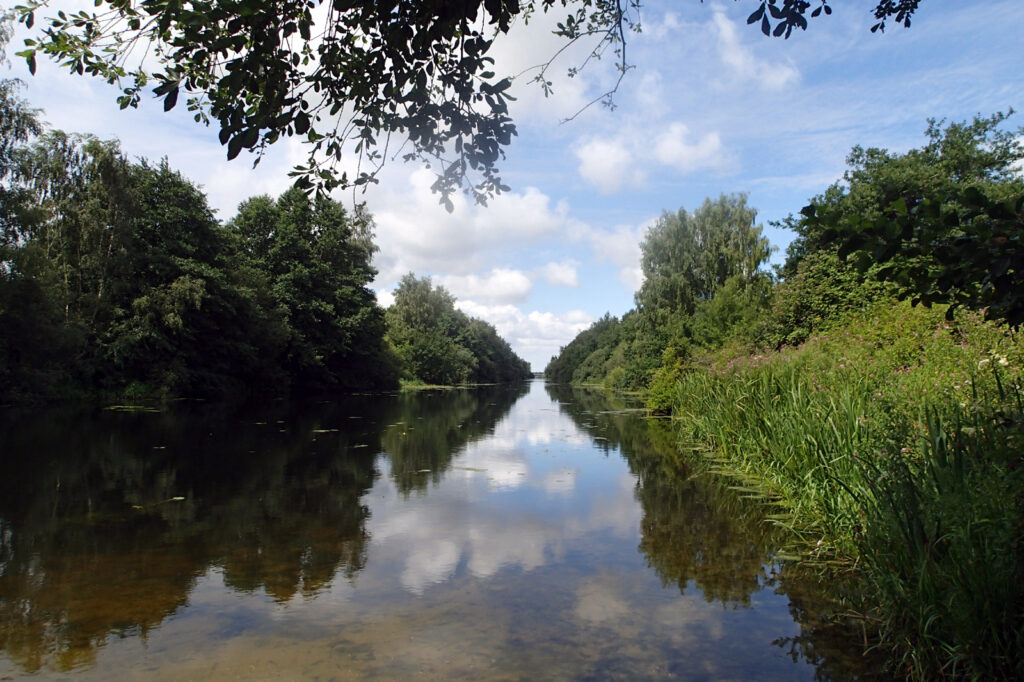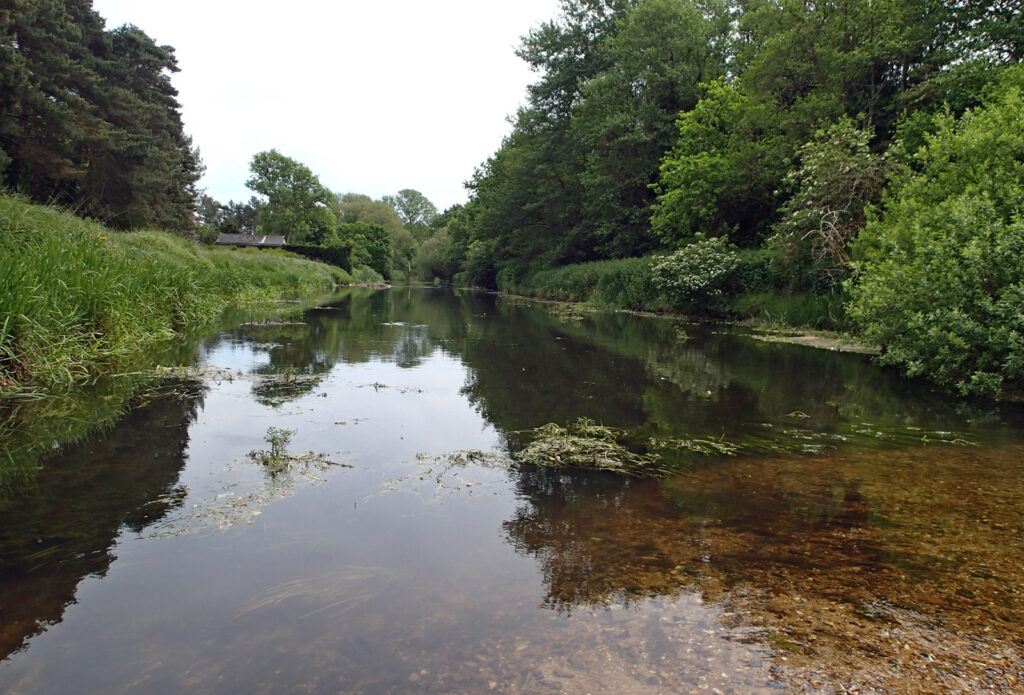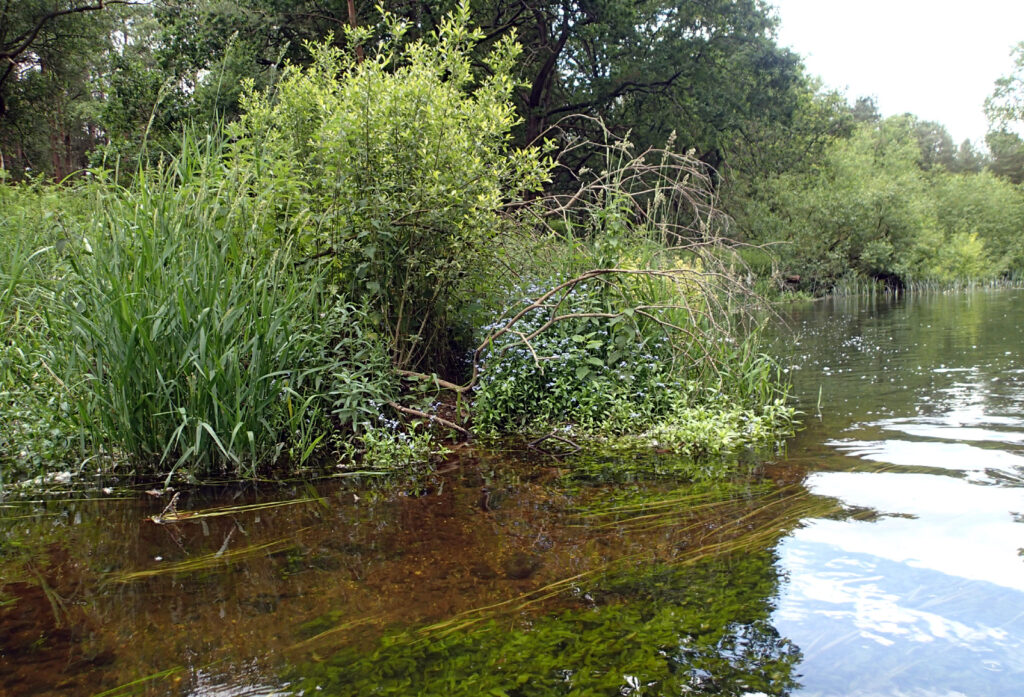In the last couple of years we have had a succession of media stories saying that no river is safe to swim in, in part because only three have been designated to be monitored under the bathing water directive (explained on OSS website). Is this true – are all our rivers dirty and unsafe for swimming? Are all the media reports and campaigns relevant and helpful for swimmers? I think not. Swimmers can get advice to make a pragmatic judgement about when the water is clean enough to swim. See this page on Bathing Water quality. See also Update at end of post. Written Oct 2020, with some updating.
Recent reports on river water quality published by the Environment Agency (under the water framework directorate), September 2020 drew headlines such as ‘Shocking state of English rivers…’; ‘Every single river in England is dirty…’, over stories explaining in more detail, with varying levels of nuance in the reporting.
These results are not about water quality measures that affect swimmers, but about chemical and general ecological health of the rivers (see bottom of post for more). These are not totally separate, and it is not that swimmers don’t care about this, but a poor result does not suggest it is not safe to swim. One of the four main factors is whether a river has been modified, such as being straightened, which clearly does not impact directly on water quality.
And the conclusion that our rivers are getting worse is not a valid one, as comparison between figures derived from different methods of testing is not possible, as this seasoned and passionate campaigner for clean rivers explains, https://geoffroberts.me/river-quality-what-has-gone-wrong/

A recent Guardian piece on the subject is debunked on an episode of Radio 4’s More or Less (5.44 -5.58 min), in a scathing analysis of the misuse of totally inappropriate statistics.
I believe that media confusion, exaggerated stories and misleading headlines (such as ‘No River Is Fit to Swim In’), amplified by a small number of vocal campaigners, is not helpful to swimmers. Some appear to believe that their priority is to grab attention, even if they are not telling the whole story, and even if there are unforeseen consequences. It almost looks as if some are using people’s wish to swim to help their arguments, and they sometimes seem more keen to attack water companies and the environment agency rather than work with them. There are some people and entities that want to stop people swimming in the rivers for other reasons, including misunderstandings about safety concerns about wildlife and crowding, and not wanting people to access waterways. Losing access to swim could be an unforeseen consequence of the latest hysteria, together with unnecessary fears among novice swimmers.
Most swimmers (and many conservationists) know that our rivers are cleaner than they have been for decades, and are certainly usually clean enough to swim in most of the time and in most places. They make a pragmatic decision based on observation and understanding, and know from experience when and how they can swim safely without getting ill, and have done in many places for many years.
However, we are getting an increasing number of new swimmers coming along, and many of them – having seen all the scary headlines – ask whether it is safe to swim, ask how they can tell whether it is safe, and are sometimes keen to buy water testing kits and so on. But they don’t need to do this and they don’t need to be so panicked, but instead can look at guidance.
In practice, most swimmers can look at the water and can assess instinctively if it is clean enough to swim or dip in. The Outdoor Swimming Society’s Is It Clean? , along with 10 Ways to Stay Well Swimming, give some tips: avoid inner city water, places with litter or debris, murky water or scum, or that smell bad. And it’s usually best to avoid swimming after heavy rain, particularly immediately downstream of grazing cattle and of discharges from water treatment works which are mapped by the Rivers Trust for England.
There are campaigns to establish designated bathing waters in a few places around the country, and there are some places that definitely need cleaning up, such as Ilkley (along with many places that don’t have a problem). This Outdoor Swimming Society web post is about considering pros and cons and practicalities before setting up such a campaign at your swim spot. (Designated Bathing Waters explained – what they are and why they matter.)

More on ecological river quality
Recent reports on river water quality published by the Environment Agency https://environment.data.gov.uk/catchment-planning/, for Anglian River Basin District: https://environment.data.gov.uk/catchment-planning/RiverBasinDistrict/5; Breckland rivers, https://environment.data.gov.uk/catchment-planning/ManagementCatchment/3009; Broadland rivers (including Waveney, Wensum) https://environment.data.gov.uk/catchment-planning/ManagementCatchment/3008
If you are interested in getting involved with work to improve the ecology of rivers, there are many projects and schemes within the catchments, for example in the CamEO Partnership, http://www.cameopartnership.org/; https://norfolkriverstrust.org/project/cam-ely-ouse-cameo-catchment-partnership/, or on specific rivers, eg the Lark http://riverlark.org.uk/index.php/about/ (and read more about the river Lark and swimmers), or check out your local Rivers Trust.
UPDATE November 2021
Ecological water quality has been a key focus of a project within The Brecks’ Fen Edge & Rivers Landscape Partnership Scheme, ‘Testing the Water’ a Citizen Science project led by Freshwater Habitats. The project aims to raise awareness and enable habitat improvements, and a key part was involving volunteers in sampling waters for phosphorus and nitrogen. The results are presented on their website https://bit.ly/BFERTestingTheWater (in a summary report you can download from this link (3 page PDF)) and a presentation on their YouTube channel. I have a copy of the detailed results.
The results matter, because – as project officer Anne Carter explains:
“From our perspective high levels of nitrate and phosphate are bad for freshwater species as most of the plants and animals have evolved over millions of years in a world where the natural level of nutrients in ponds, lakes, streams and rivers was very, very low. With the advent of intensive farming and industrialisation over the last couple of centuries more and more nutrients have been added to the freshwater environment which can cause profound changes and the freshwater wildlife struggle to adapt in this timescale. So for example high levels of N & P in a garden pond can cause species such as duckweed to thrive, which in turn blocks out light to restrict other submerged plants to thrive. So this is a real problem for biodiversity. Incidentally, there can be high levels of N & P in most tap water, which is why it’s not a good idea to top up the water in a garden pond with tap water.”
My comment. This is a really useful explanation of the impact of these chemicals on biodiversity. If you look at the Testing the Water report you will see mention of “highly polluted” waters, especially in the rivers, but it’s worth being aware of the distinction between ecological water quality and bathing water quality. Although there can be an indirect impact for swimmers and other recreational water users from these pollutants, as duckweed, algae and other impacts of eutrophication do make the environment less pleasant or sometimes actually problematic for them, I am not aware of evidence that these chemicals have a direct impact on swimmers. There are some concerns about high levels in drinking water, but when swimming it seems very unlikely that enough water might be ingested to cause concerns for swimmers.
Of course swimmers do care about the impact on wildlife. However, the current media emphasis on sewage has led to quite a lot of misunderstandings among swimmers and others taking an interest in people swimming, and it is important to see that there are different issues for humans and biodiversity.

